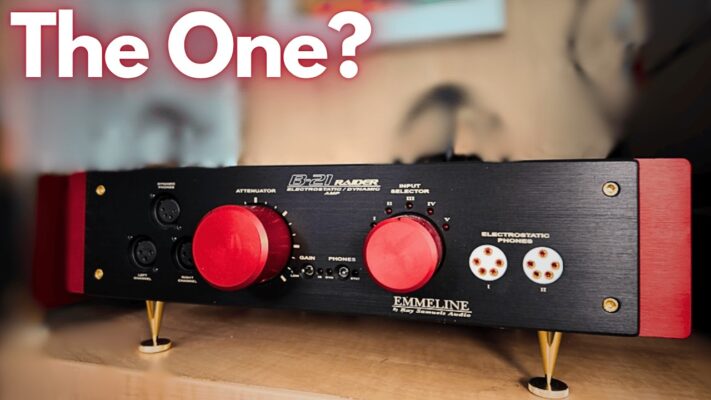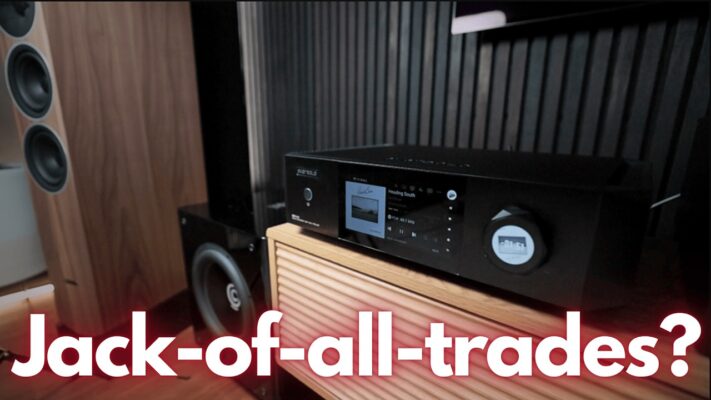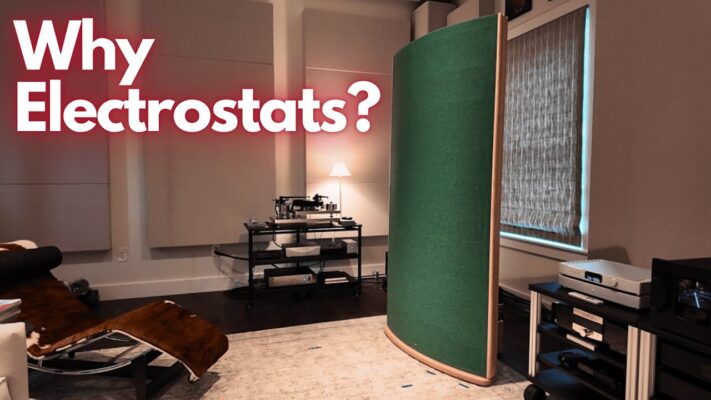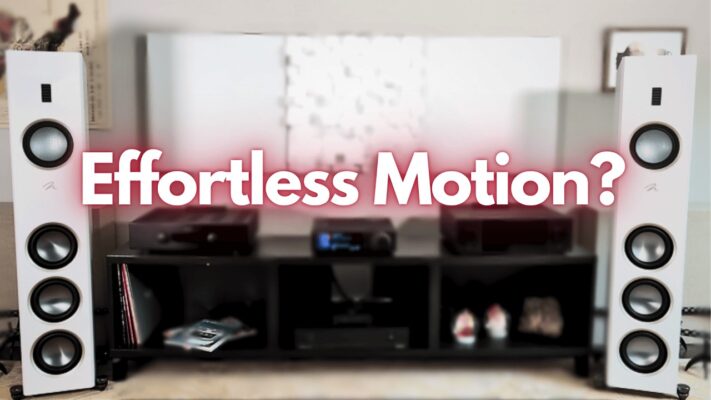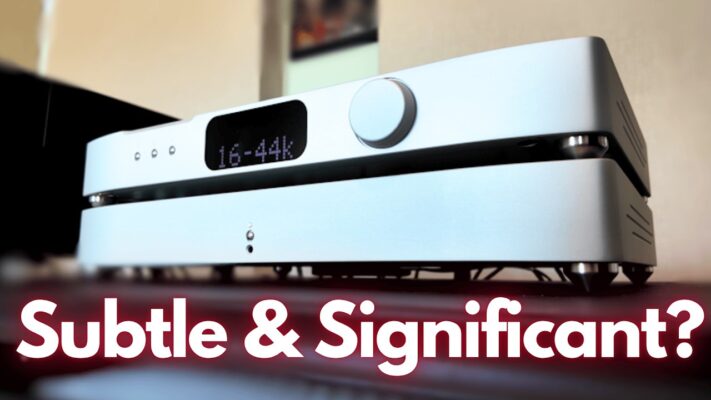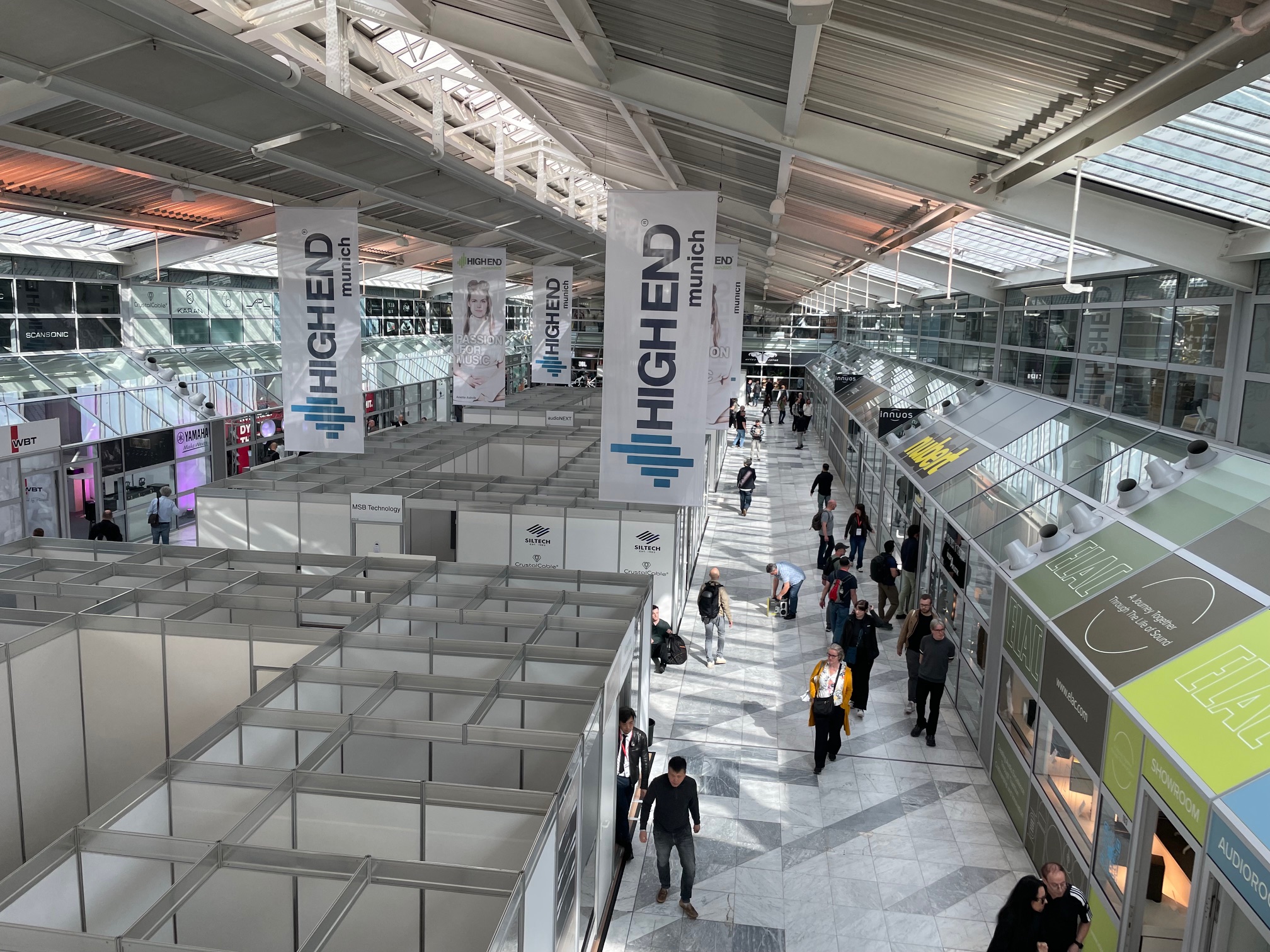
It is bittersweet that this last High End Munich show was the biggest and best-sounding I’ve attended. After 21 years at Munich’s MOC convention hall, next year’s show will be in Vienna, a move that left many in the industry uncertain about the new venue. That’s because it’s hard to argue with the juggernaut that High End Munich has become: 10,562 trade visitors (manufacturers, dealers, distributors) from 87 countries, 11,675 consumers from 63 countries, and 581 press from 43 countries. A total of 501 exhibitors showcased nearly a thousand brands over the four-day exhibition. There’s simply nothing that compares to the Munich show.
The Absolute Sound fielded our largest Munich team ever, with Andrew Quint covering loudspeakers under $50,000, Michael Fremer on his usual analog beat, Robert Harley on electronics and digital sources, Jonathan Valin providing sonic descriptions of speakers costing more than $50k, Tom Martin on exciting technical developments, and Jacob Heilbrunn giving us his color commentary on his favorite products and systems.
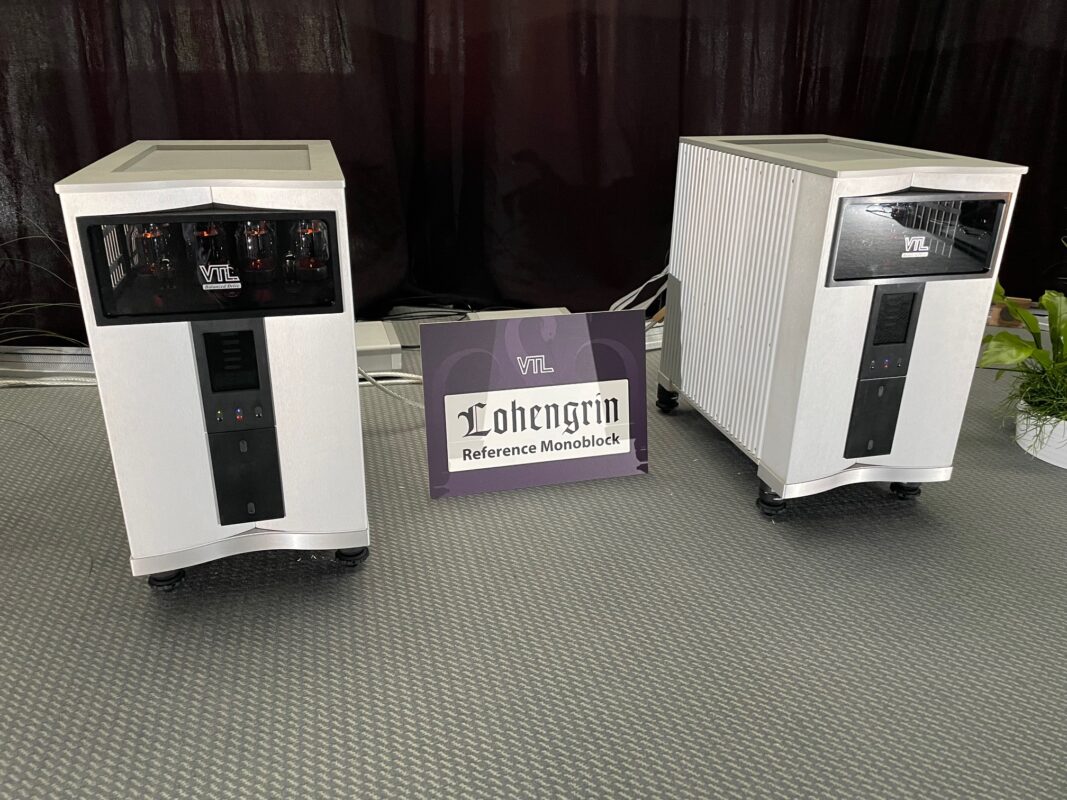
VTL debuted the Lohengrin, the company’s new flagship power amplifier. The Lohengrin retains the driver stage of VTL’s Siegfried and combines it with a new eight-tube output stage. This new output stage, capable of 400W, has a lower output impedance that allows for a simpler and better-sounding output transformer. The design has zero global feedback, wide bandwidth (–1dB at 100kHz), and an adjustable damping factor. The visual design has also advanced, giving the Lohengrin a more modern look. The price is $100,000 per pair, with the first deliveries scheduled for this summer. Driving Wilson Audio Alexx V Carbon speakers with dCS digital source and Kuzma turntable with a Lyra Etna Lambda SL cartridge and Nordost cabling, the Lohengrin produced perhaps the best sound I’ve heard from the Alexx V.
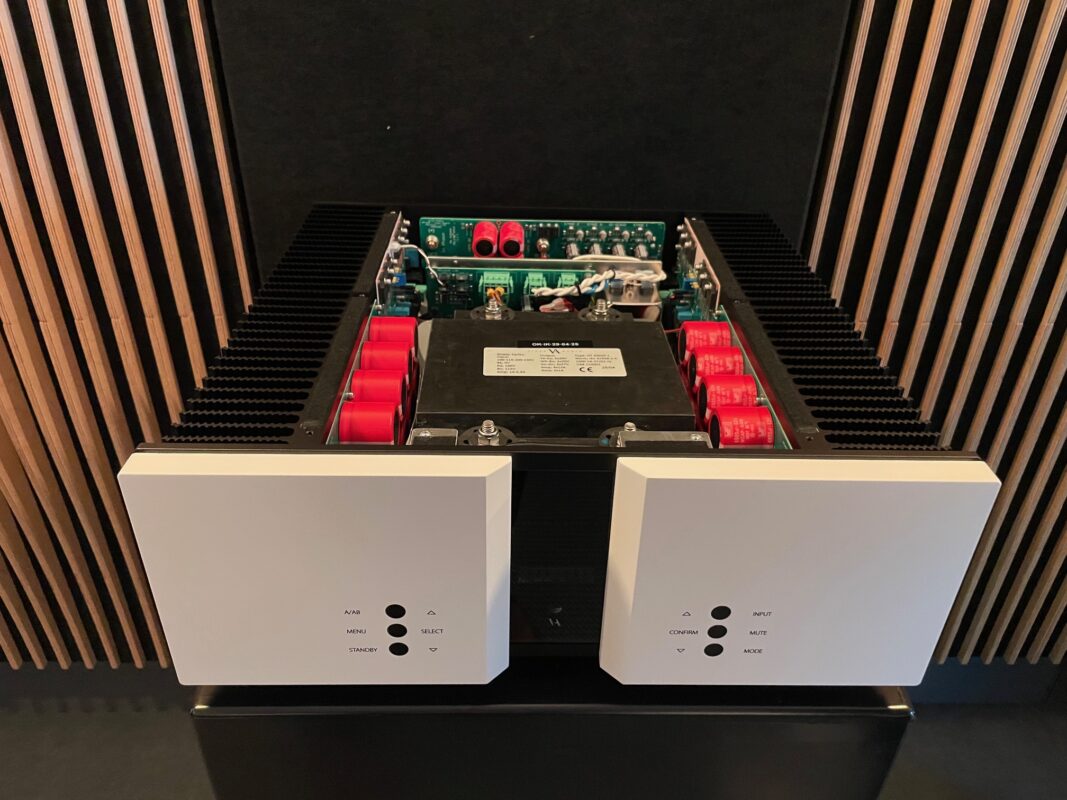
Vitus Audio of Denmark previewed a new power amplifier, the SM-025. It is a reimagining of the SM-011, which is being discontinued. No details are available, but it looks like an interesting design, with its output-stage boards mounted inside a milled-out section of the heatsink, massive transformer, and all-new input stage. The user can select the output mode and power, 40W in Class A or 200W in Class AB. U.S. retail price is expected to be around $65,000 per pair, with availability in late summer.
Although it made its debut a month before at the AXPONA show, Soulution’s 717 power amplifier ($119k) sounded superb driving the AlsyVox Botticelli, a three-way full-range ribbon that is one step down from the Caravaggio I reviewed last year. The system was sourced by Soulution’s ingenious new turntable in which the platter slowly moves laterally under the pivoted tonearm to eliminate radius-dependent tracking error (see Michael Fremer’s report in this issue).
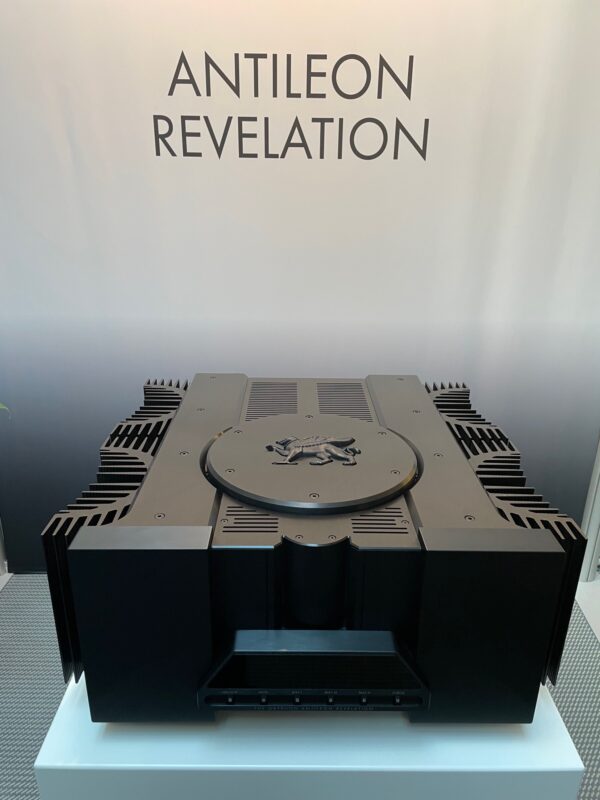
No product better exemplifies the core amplifier technologies and values of the Danish brand Gryphon than the Antilionpower amplifier. This amp, which has undergone many revisions since its introduction in 1995, features a massive build for its power rating, a huge transformer, banks of high-current output transistors, oversized heatsinks, and stunning industrial design and build-quality. All this hardware is in the service of delivering Class A power without dynamic limitations. I reviewed the Antilion Evo and fell in love with the combination of Class A liquidity with an iron-fisted grip in the bass. In Munich, Gryphon introduced this amp’s successor, the Antilion Revolution that takes the performance to the next level. Everything in this fifth-generation amplifier has been upgraded based on technologies developed for Gryphon’s top-level Commander preamplifier and Apex power amplifier. The Antilion Revolution now sports 40 high-current Toshiba output transistors, the same as in Gryphon’s flagship Apex. Power supply capacitance has been increased to 335,000µF per channel, fed from dual power transformers (plus a third transformer for the control and housekeeping circuitry). As with all Gryphon power amplifiers, stereo and mono versions are available (165Wpc and 180W respectively). The price is $45,000 for the stereo model and $90k for a pair of monoblocks.
Linn Products introduced a new flagship amplifier that showcases some sophisticated design techniques. The Klimax Solo 500 is a complete redesign of the company’s highly successful Klimax Solo. Housed in a compact machined-aluminum enclosure, the Class AB amplifier outputs 250W into 8 ohms and 500W into 4 ohms. This high power in a small enclosure is made possible by a novel cooling system in which the electronics are mounted upside down in a sub-chassis structure composed of a thermally conductive block of aluminum lined with cooling fins. This natural convection system keeps the circuit cool under normal conditions, but when the amplifier is driven hard, two internal fans force air through the network of channels in the thermal plate. The fans are controlled by an FPGA that monitors the circuit temperature as well as the audio signal and sets the optimum fan speed. Another interesting technology in the Klimax Solo 500 is Adaptive Bias Control, a circuit that monitors the bias to each output transistor and adjusts it to the optimum setting. This isn’t to be confused with a dynamic biasing circuit that attempts to keep the output stage biased in Class A operation. Rather, it compensates for drift in the optimum bias caused by temperature and component aging. Price: $32,380 per pair.
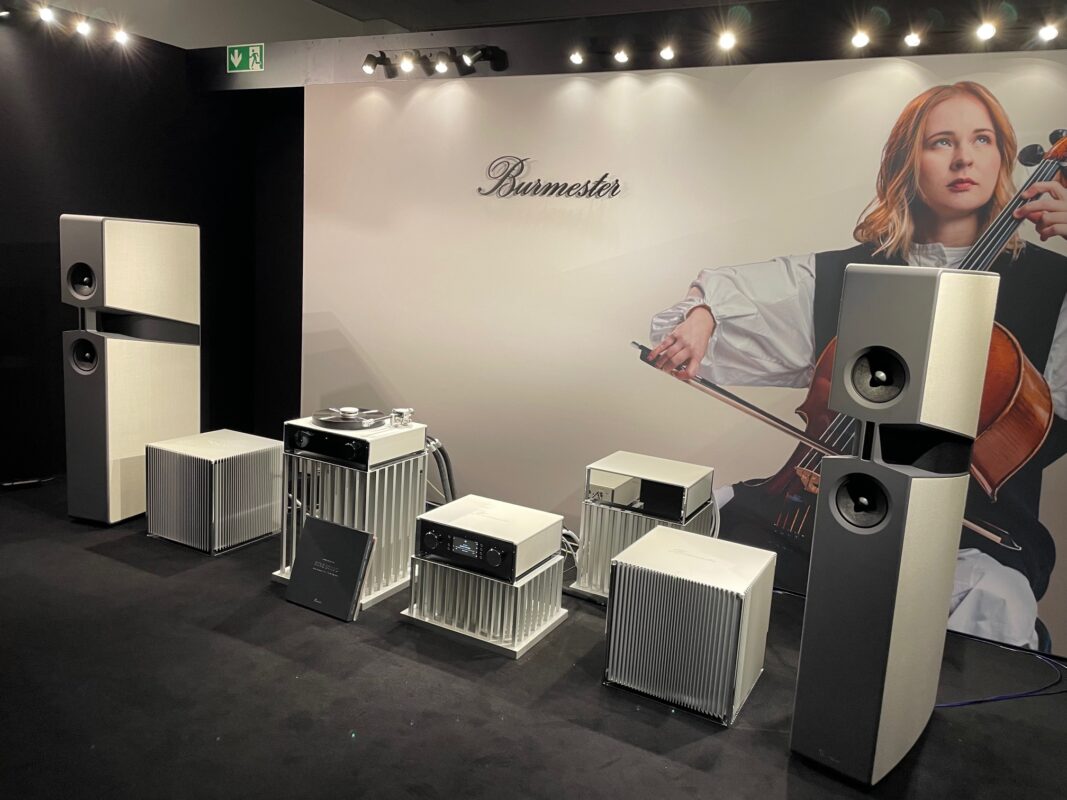
Burmester announced a complete redesign of its flagship Reference Line, with a new preamplifier, power amplifier, and turntable. I’ll cover just the electronics here, although details on the new products were scarce. The 249 preamplifier is a modular design that can be fitted with a phonostage, additional line input modules, and a DAC card. The power supply is external, with both chassis clad in classic Burmester mirror finish. The 259 power amplifier can be configured for stereo or mono operation and reportedly requires no warm-up time to reach its peak performance. The new products are all-new, clean-slate designs that are meant to be future proof. Their appearance can be customized far beyond specifying the chassis color, with a wide range of color options and patterns. Burmester recently acquired BCB Electronik of Berlin, one of its suppliers, which enables Burmester to expand its products’ capabilities and customization. No specs or pricing was available at press time, although the new Reference Line products are scheduled to ship in “Q3 or Q4.”
Karan Acoustics, the company founded in 1986 in Serbia, showed a system comprising its flagship LINEa preamplifier, PHONOa phonostage, and POWERa monoblock amplifiers. The products are beautifully built with many custom parts, fully balanced circuits throughout, oversized power supplies, handsome casework, and no coupling capacitors between stages. Even Karan’s stereo amplifiers are dual-mono. The products were presented by Emil Karan, son of founder Milan Karan, who passed away last year.
The Taiwanese company Telos showed a range of unusual power conditioners, grounding devices, and a music server (the latter described below). The news at Munich was the launch of the Foundation Core Series, which brings the company’s technology to lower prices (its top power conditioner is $50k, for example). The Power Core ($15k) provides five AC outlets plus a PowerCon connector to attach a Telos power strip if you need more outlets. The Ground Core offers six binding posts for connecting ground cables between the Ground Core and the chassis of your equipment. Price: $12,000. All the products are built with a solid aluminum chassis.
Robert Harley on Digital Sources
The big news from Munich on the digital audio front was the launch of Qobuz Connect. This is a new app from Qobuz that allows you to control playback on Qobuz Connect-compatible devices without the need for third-party software (Roon, for example). I have yet to listen and evaluate Qobuz Connect, but many manufacturers I spoke with thought that Qobuz Connect offers better sound quality than streaming through another app. Virtually every company making DACs has already incorporated Qobuz Connect in its products. Watch for a full review.
Lumin, maker of well-built and great-sounding digital source components, showed the P1 Mini, a streamer, DAC, and preamplifier. You can use as many of these functions as you like, or all three. The P1 Mini isn’t just a digital-input device with source switching, but rather a full-function analog preamplifier with two analog inputs, making it a versatile hub for systems with analog source components. Digital inputs include USB, SPDIF, and HDMI, with the latter offering stereo input with AV passthrough and ARC (Audio Return Channel). The P1 Mini will decode PCM up to 384kHz and DSD to 512. The volume control is the excellent Leedh, which doesn’t degrade fidelity (I found that Leedh lived up to its claims in my review of the Lumin P1). It also has dual network inputs, one of them for fiber optical, along with dual Femto crystal oscillators with Lumin’s proprietary FPGA clock distribution system found in the company’s upper-end products. Along with this functionality, the P1 Mini features dual ESS Sabre ES9028 DACs and fully balanced circuitry. Price: $6000.
For those listeners with a large digital music library, Lumin showed its L2, a four-port network switch, available with or without drives (4TB or 8TB). Two of the network ports are optical for complete noise isolation. The L2 price ranges from $4200 (no internal storage) to $6600 when fully loaded with 8TB.
Finally, Lumin used the Munich show to introduce its flagship U2X, a digital transport (no internal DAC) that is designed for ultimate performance. The chassis is machined from a solid aluminum block, and the dual-transformer power supply is housed in an external chassis. The USB output is noise-isolated and features a sophisticated clocking circuit for low jitter. The U2X also has 10MHz clock outputs and one clock input for synchronizing the digital components in your system that have clock inputs (or clock outputs). Price: $11,000, with availability in August.
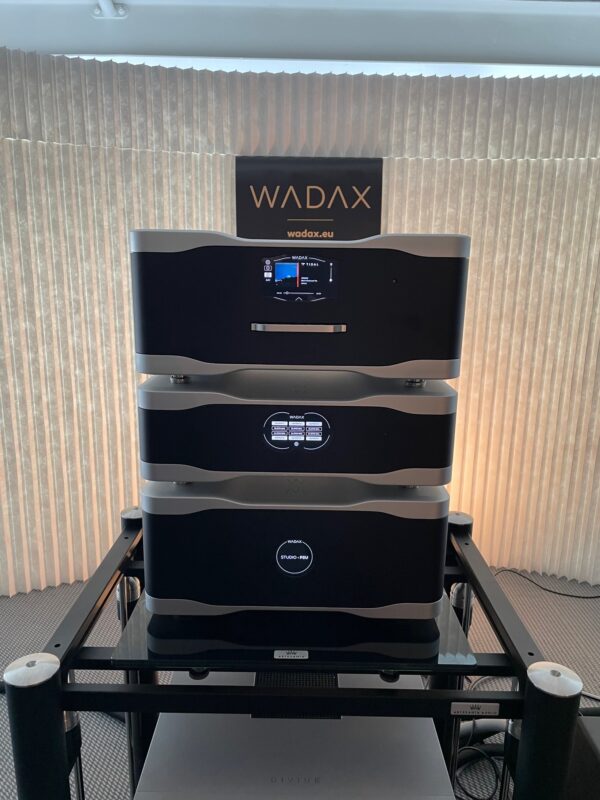
The Spanish company Wadax introduced two optional companion products for its popular Studio Player. The Studio Player, which I reviewed in Issue 359, is a streamer, DAC, and CD/SACD player with a volume control, all in one chassis ($40,800). The new companion products are the Studio Clock ($28,500) and Studio PSU power supply ($29,800), and the Akasa DC Studio DC cable that connects the Studio PSU to the Studio Player. (The Akasa DC Studio is required for the Studio PSU). The Studio Clock is an outboard high-precision clock that improves the performance of the Studio Player, and the Studio PSU replaces the Studio Player’s internal power supply. I’ve found with Wadax’s Reference components that upgrading to the external power supply confers a significant improvement in sound quality. The Studio Clock offers six independently isolated clock outputs that can synchronize multiple components at a variety of frequencies.
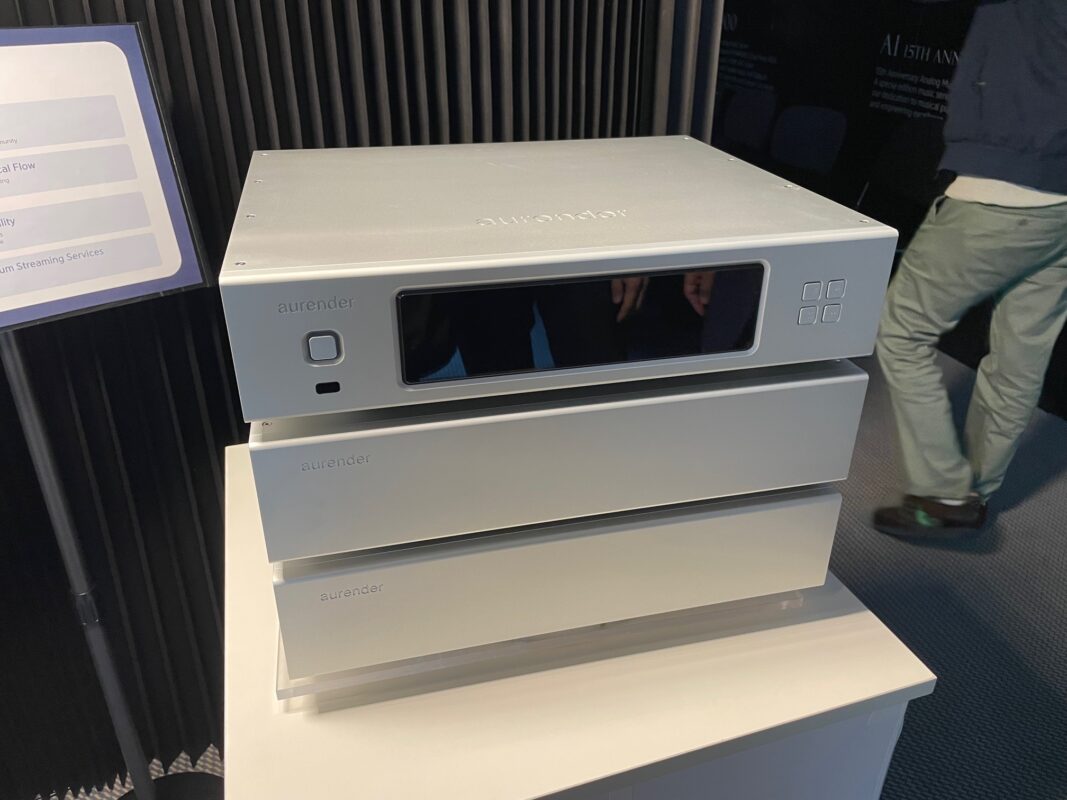
The Korean server specialist Aurender unveiled its new three-box flagship server, the N50. The three chassis house, respectively, the power supply, CPU and control electronics, and the audio-output circuitry. It offers dual AES/EBU output for high-speed PCM along with a port for adding an I2S output. The entire design is centered on reducing noise at the source of a digital playback system. It does this through separating the major functions in three chassis for greater isolation, an extensive power supply with cascaded regulation, a galvanically isolated USB output, and isolated network ports. The N50 also features a new high-precision clocking system built around an oven-controlled crystal oscillator (OCXO) under FPGA control. A clock input jack is provided if you want to use an external master clock. As expected, the N50 supports all the streaming services along with being Roon Ready. Price: $35k, with July availability.
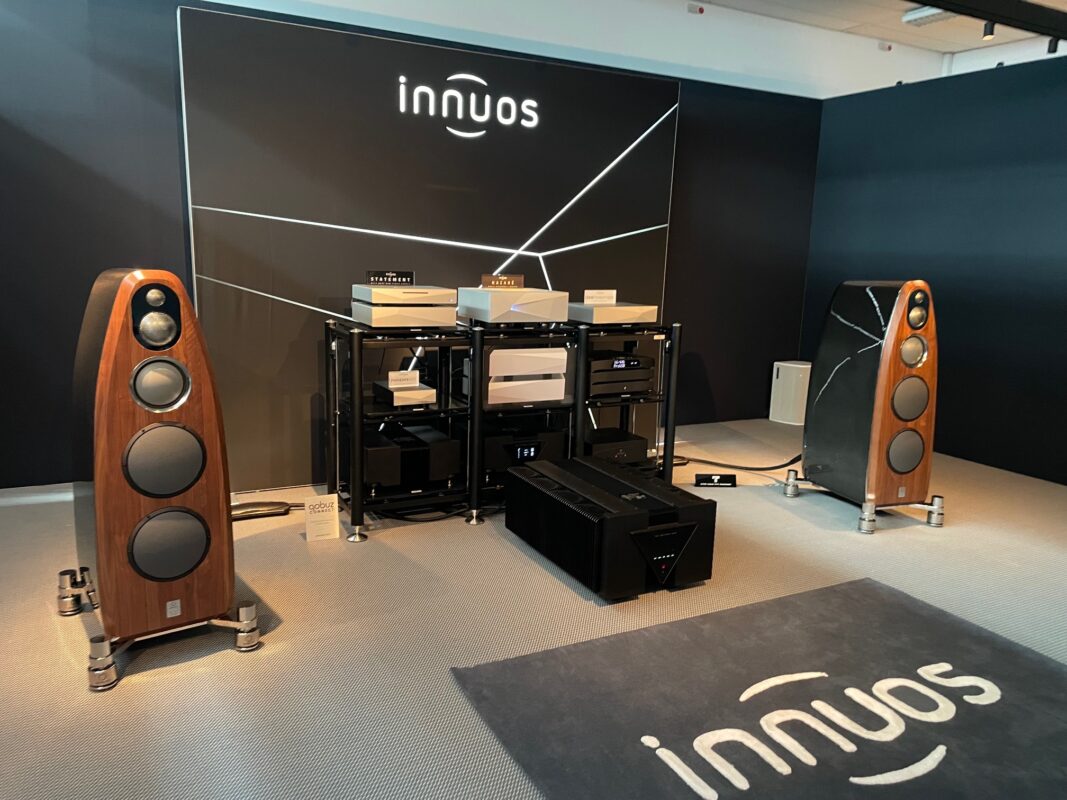
Another flagship server introduced at Munich was the impressive Innuous Nazaré. The Nazaré in its basic form is a single-chassis unit that can be expanded to a three-chassis configuration with the addition of the Nazaré Flow digital-audio output stage and the Nazaré Net network switch. The Nazaré Flow will also work with any USB source. Similarly, the Nazaré Net is compatible with any network connection. The Nazaré features massive processing power, new processing boards, and a novel architecture that provides a more direct signal path. The power supply is massive, with 752,000µF of filter capacitance (more than in many power amplifiers), GaN-based active rectification, and NGaN+ regulators. A high-precision USB reclocking circuit reduces jitter. The Nazaré can be fitted with non-standard output ports, such as MSB’s ProISL interface. Finally, the chassis features a new vibration-damping system developed with an outside vibration specialist. The key components inside the chassis are vibration isolated, as is the entire aluminum enclosure. Innuos demonstrated the Nazaré by comparing it to its already excellent Statement server, and I was shocked by how good the Nazaré sounded. In fact, the system with the three-chassis Nazaré at the front end, MSB Cascade DAC, Gryphon Commander preamplifier, Gryphon Apex power amps, and Marten Coltrane Quintet speakers produced one of the show’s best sounds. The full-blown Nazaré system will sell for $88,000 when it starts shipping this summer.
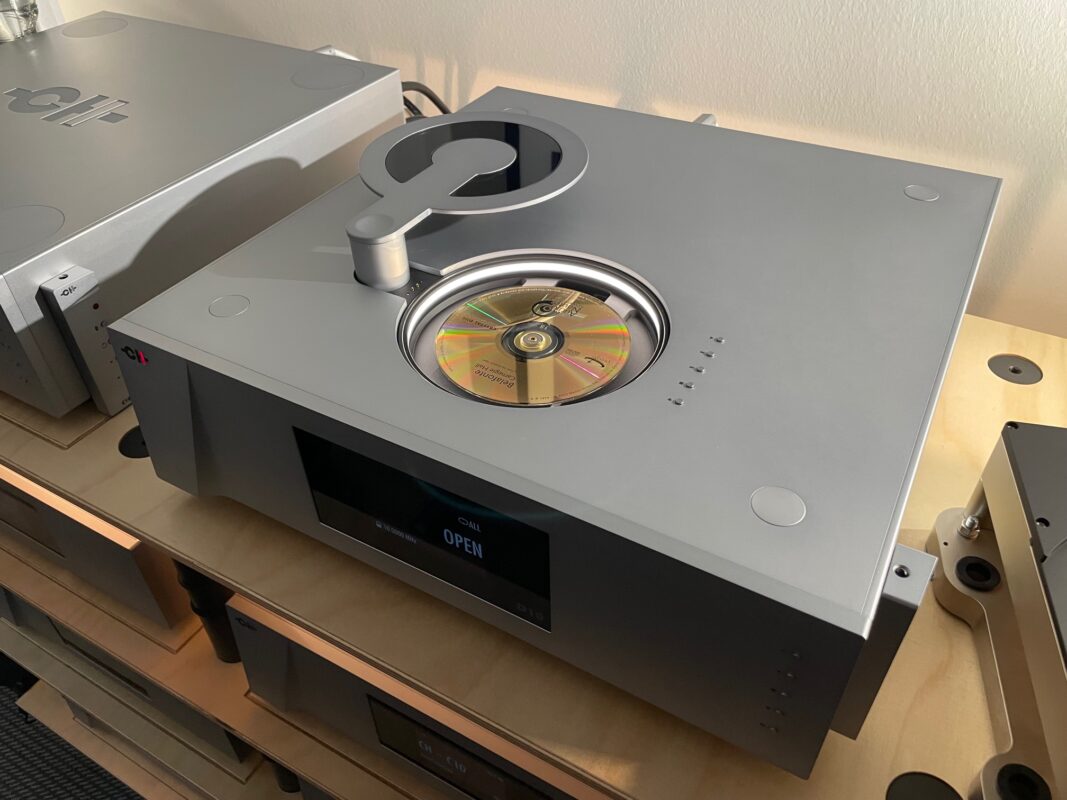
CH Precision debuted its long-awaited 10 Series digital components, the D10 Reference Transport, C10 Conductor, and C10 Master DAC. The transport is an engineering marvel; the CD/SACD disc mechanism itself (which was on display outside the chassis) is a massively built structure incorporating novel ideas executed at the highest level. The transport platform is suspended within the chassis with alpha-gel isolators and is built from a dense brass core encased in aluminum. This disc-spinning mechanism alone weighs nearly 30 pounds. The top-loading design is also ingenious; the disc clamp is built into the cover that automatically locks the disc down for playback, obviating the need to install the clamp manually (and finding a place to put it between discs). Also introduced at Munich was the C10 Conductor, a companion upgrade to the C10 Master DAC, that performs all the digital processing in the C10 Conductor chassis, leaving the C10 DAC to focus on digital-to-analog conversion. The C10 DAC receives upsampled data and a clock from the C10 Conductor via the proprietary CH Link digital interface. The C10 is supplied from an outboard power supply; a second power supply is also available for the ultimate in performance. Prices are $95,000 for the D10 Reference Transport and $75,000 for the C10 Conductor.
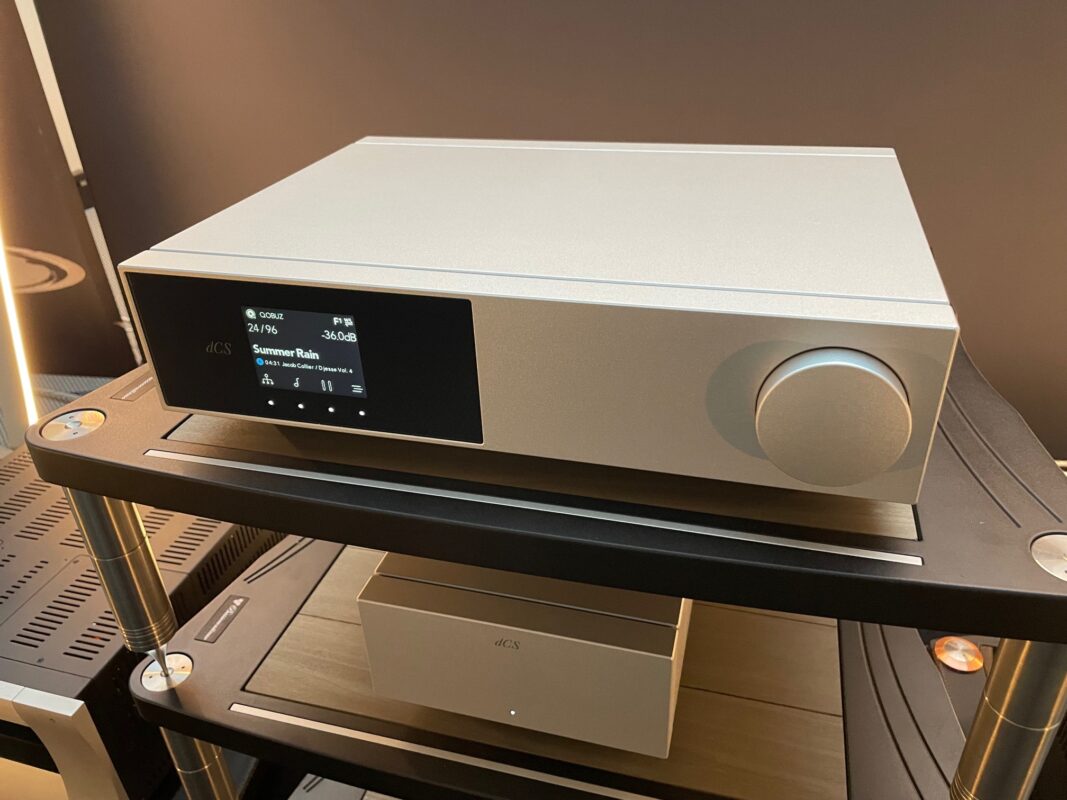
dCS unveiled its Lina DAC X network player that adds features to their popular Lina DAC. The new Lina DAC X offers multiple inputs to support playback from external devices (TV, computers, disc transports, servers) along with a volume control for direct connection to power amplifiers to create a complete music playback system. The flexible architecture allows future hardware upgrades, along with dCS’s long history of providing its customers with free software updates. The chassis is machined from a solid aluminum block, and the large front-panel display makes it easy to navigate. Price: $15,500.
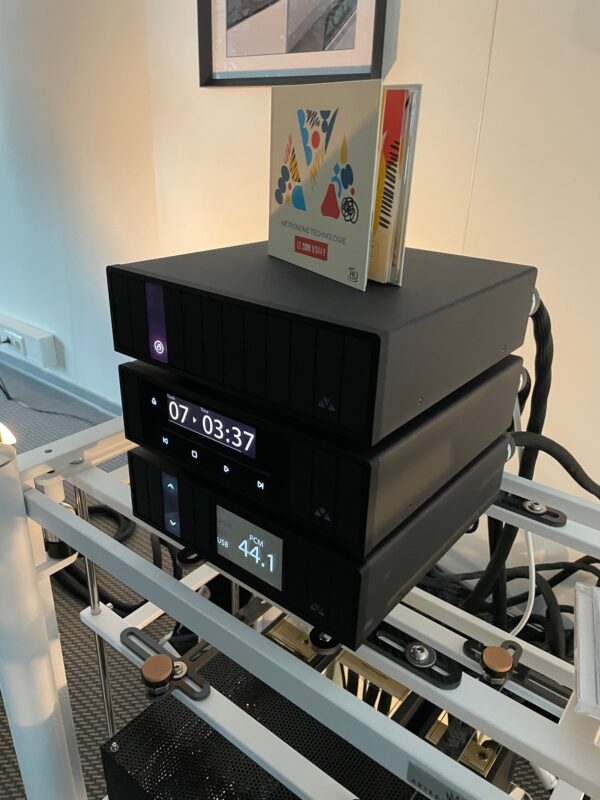
French manufacturer Metronome debuted a first in the world of digital audio: a server with music-management software Audirvana Studio that runs natively on the server (a dedicated Linux computer with 4GB of RAM). The new DSAS(Digital Sharing Audio Server) streamer (Kalista’s first streamer) is a compact product that connects to an external DAC (Kalista makes the matching DSC Mini) for music streaming and storage (2TB expandable to 4TB). The DSAS was designed in conjunction with Audirvana, another French company that has long made a highly regarded music management software package. The DSAS comes with a three-year Audirvana subscription. After that, some features remain functional, or the user can purchase a monthly subscription. The price is $5990, the same cost as other products in the DS range (DSS 2 network player and DSC Mini DAC).
A Taiwanese company new to me, but who is celebrating its 20th anniversary, introduced in a passive display its EMP Monster Music Server. With a strong background in AC power conditioning (the company’s main business), the EMP Monster is built around the idea that the power supply is the foundation of high-quality file serving. The EMP Monster features a power supply suitable for a power amplifier. It can be configured as a Roon Core or Roon Ready endpoint with or without an internal DAC. The EMP Monster Music Server will be priced at $40,000 and will be available during Q3 of 2025.
RH’s Best of Show
Best Sound (cost no object): There were so many great-sounding systems at this year’s show that it would be a disservice to readers and manufacturers to pick one or two. So, here are my sonic highlights, in no particular order.
AlsyVox Michaelangelo. This massive full-range ribbon speaker making its debut had an uncanny lifelike immediacy that box speakers simply can’t duplicate. The Michaelangelo has more power, weight, and tonal density than AlsyVox’s stunning Caravaggio XX I reviewed last year, along with 97dB sensitivity. A spectacular debut.
MBL 101-xTreme. This system never fails to stun with its ability to simply disappear as a sound source, massive bass power and impact, and ultra-smooth tonal balance. Plus, MBL’s Jeremy Bryan plays real music, not the usual insipid audiophile pap.
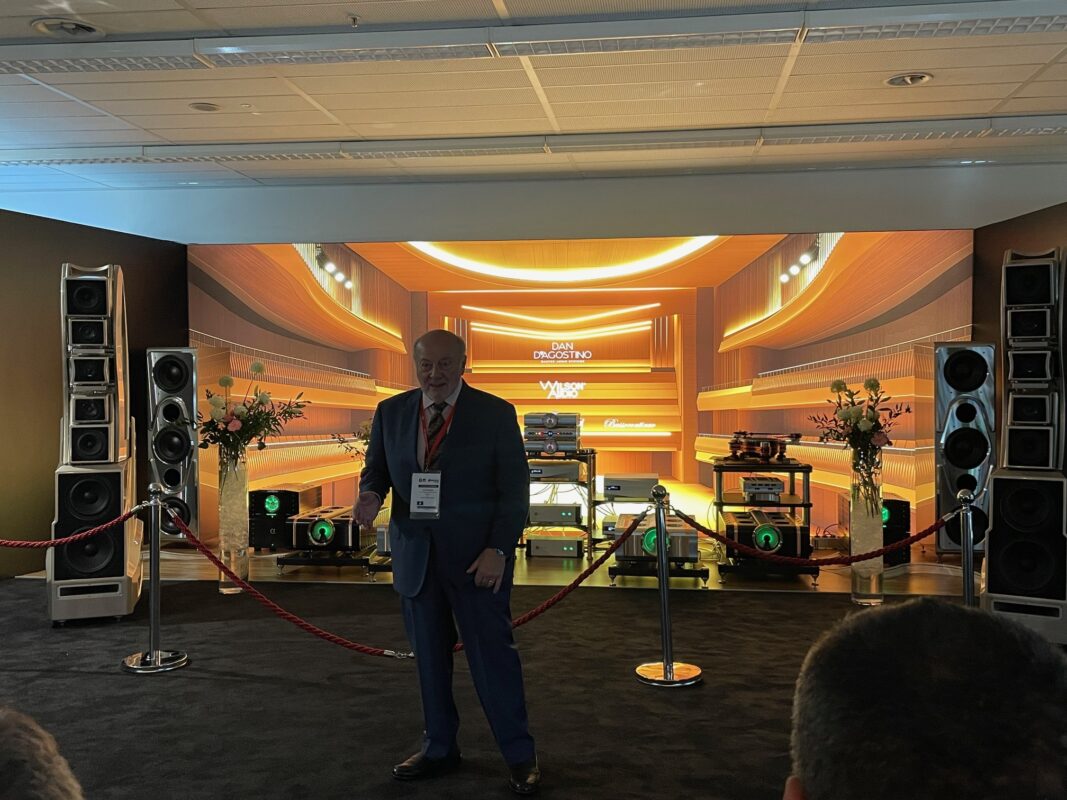
Wilson WAMM. Driven by a massive array of Dan D’Agostino Master Audio Systems Relentless power amplifiers and Relentless preamp in a large room, the WAMM sounded big, majestic, and hugely dynamic. It’s rare to hear the WAMM at a show, and this exhibit showcased David Wilson’s magnum opus in its full glory.
Clarisys Atrium. Another great showing for ribbons was the Atrium, a three-piece (per side) full-range ribbon from Clarisys. Although impractical for all but palatial rooms, the big Clarisys presented one of the most stunning spatial presentations I’ve heard from an audio system. Everything else about the speaker—tone color, liquidity, dynamics—was first rate. Driven by all VAC tube electronics in the largest room in the MOC convention hall, the big Clarisys delivered a memorable experience.
AlsyVox Botticelli. This full-range ribbon driven by Soulution 717 and Soulution’s new turntable, all on Critical Mass Systems racks, was gorgeous sounding. At a much lower price than the Caravaggio XX I reviewed, the Botticelli brings the glories of ribbon technology to a wider audience.
Lorenzo LM1: This unlikely looking speaker (a large rectangular box with horn-loaded tweeter) combined tonal truth, spectacular soundstaging, and startling dynamics. This Spanish speaker is imported by Rhapsody and sells for $250k per pair. The Lorenzo LM1 was a real discovery for me.
Best Sound (for the money): The Bloom stand-mount speaker (€14,900) from Silent Pound, a new Lithuanian speaker manufacturer that incorporates some novel technologies to reduce room reflections. Terrific imaging, wide dynamics, realistic tone color, and exceptional bass extension marked this debut.
Most Significant Introduction: AlsyVox Michelangelo full-range ribbon loudspeaker.
Most Significant Trend: The increasing sophistication of digital audio hardware, exemplified by the Innuos Nazaré, CH Precision D10 Reference Transport and C10 Conductor, and the Aurender N50.
Tags: MUNICH SHOW REPORT ELECTRONICS

By Robert Harley
My older brother Stephen introduced me to music when I was about 12 years old. Stephen was a prodigious musical talent (he went on to get a degree in Composition) who generously shared his records and passion for music with his little brother.
More articles from this editorRead Next From Show
See all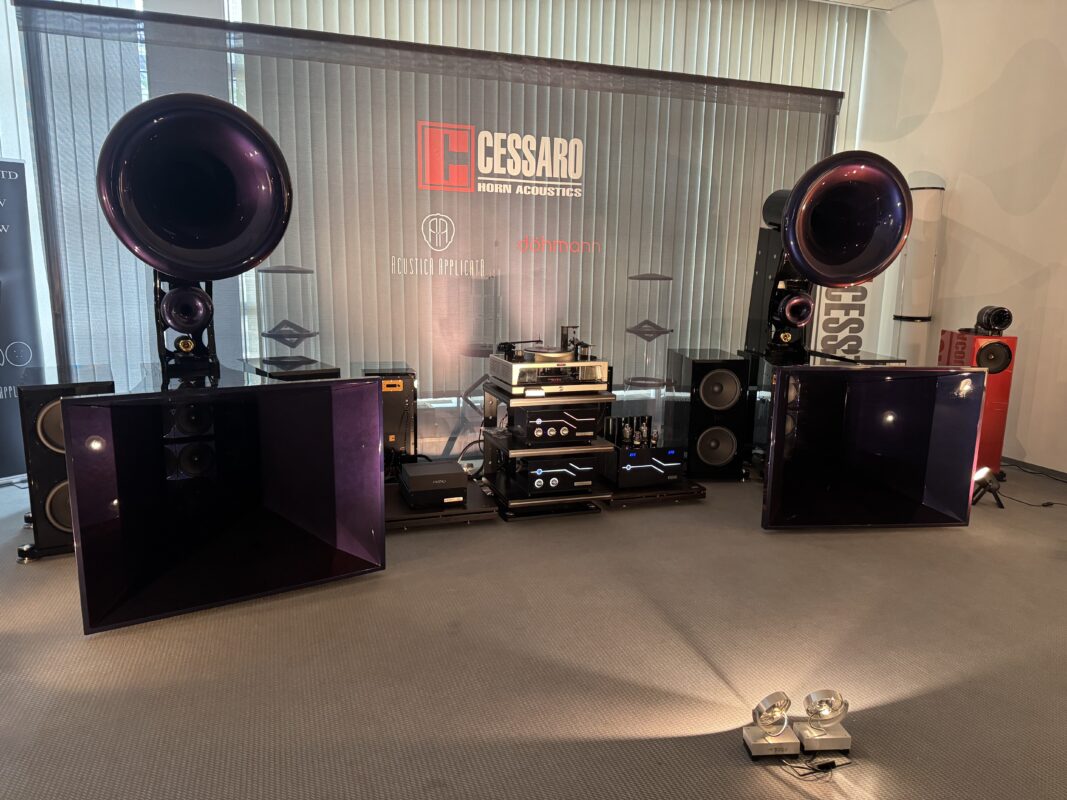
High End Munich 2025: Highlights
- May 30, 2025
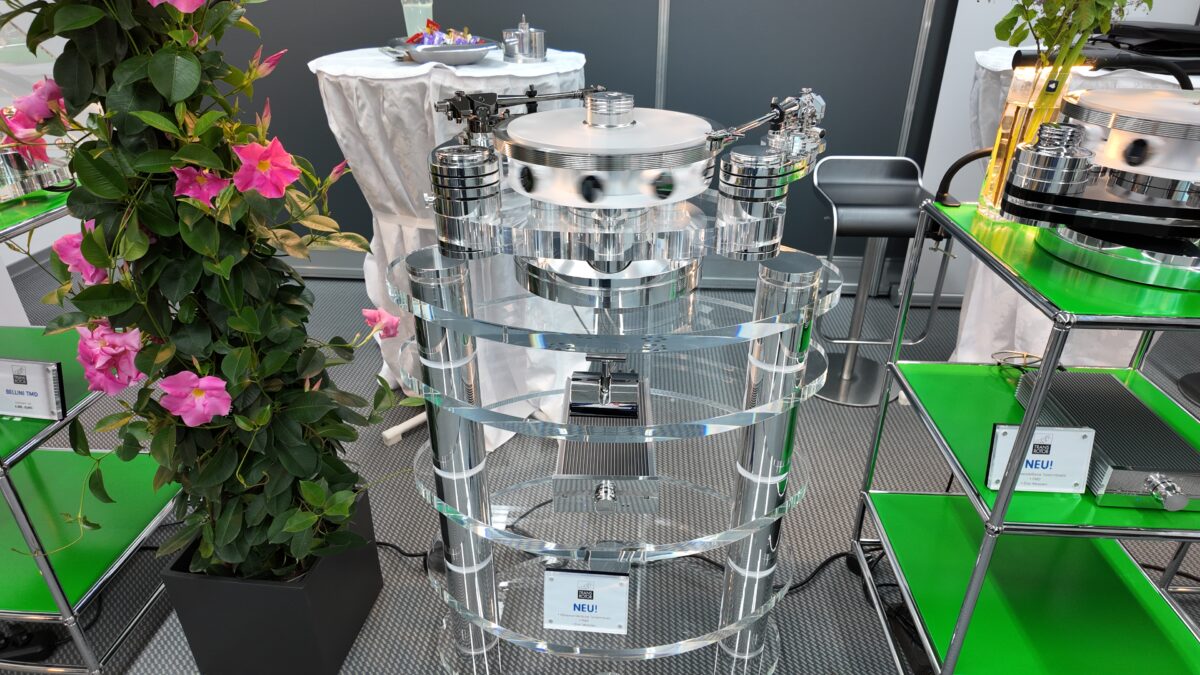
High End Munich 2025: Michael Fremer on Analog
- May 30, 2025
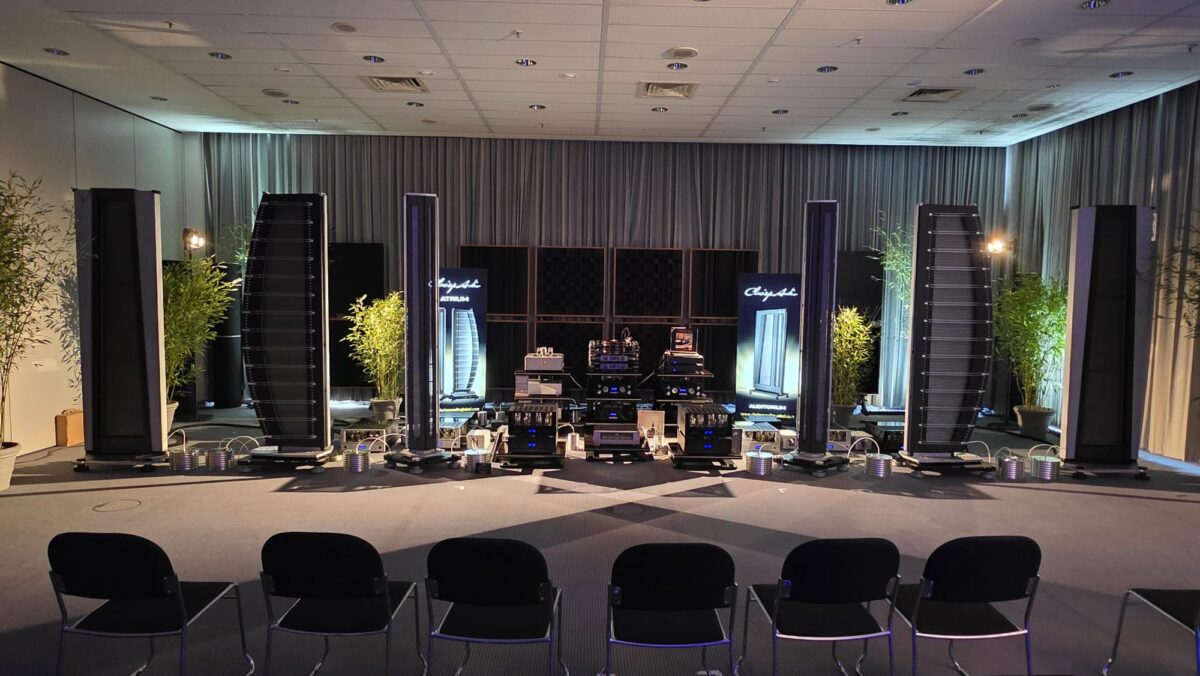
High End Munich 2025: New Loudspeakers under $50,000
- May 30, 2025
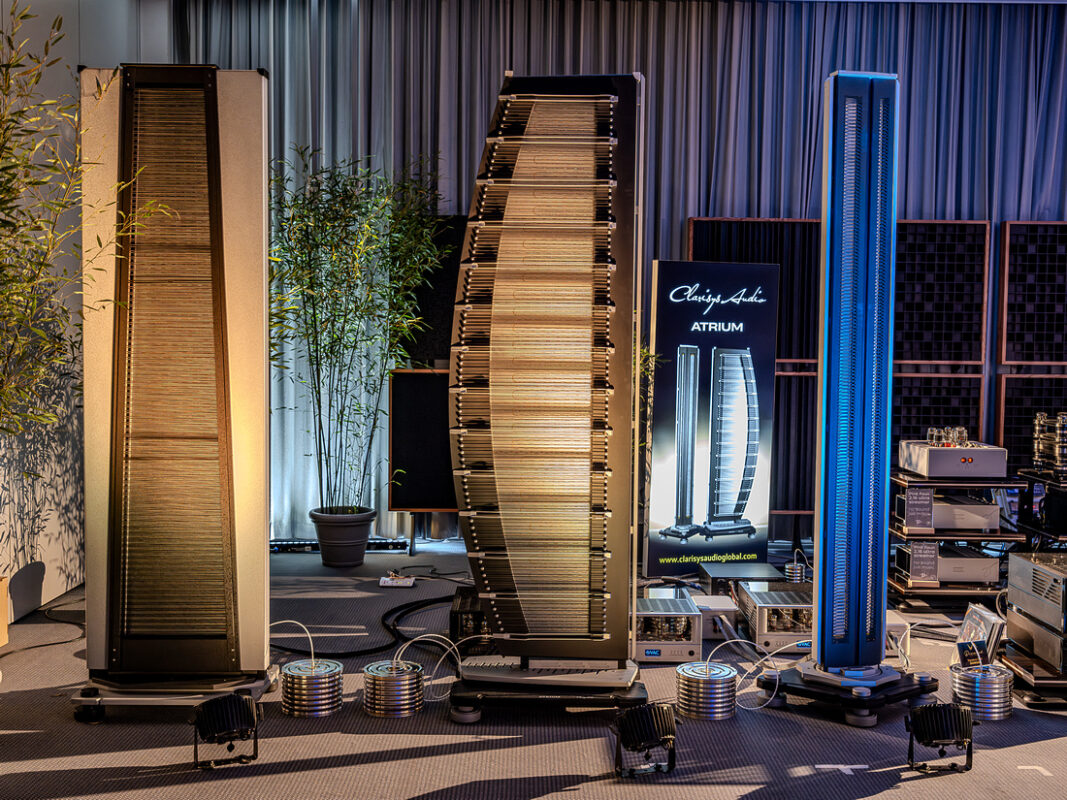
High End Munich 2025: Loudspeakers $50k and Up
- May 28, 2025










